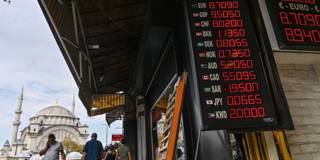
Turkey’s Slow-Motion Economic Crisis
Banks cannot engineer a balance between exchange rates and interest rates in a country with free capital flows, where banks’ funding conditions are affected by the global economic environment and by country risk. As Turkey has demonstrated, using banks for this purpose destroys both internal and external economic balances.
ISTANBUL/WASHINGTON, DC – No one should be surprised by Turkey’s recent economic and financial woes. The country’s triple crisis (currency, banking, and sovereign debt) has been unfolding for years. Whether this economic turmoil will incite political turmoil is now a widely debated question.